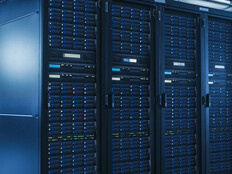Green Outside the Data Center
From the wiring closet to the desktop, the IT sphere beyond the data center is alive with possibilities for green computing as the public sector taps technologies to eke out energy and cost savings.
Organizations across the country are deploying products that reduce power consumption in myriad ways. Buying energy-efficient desktops and notebooks, installing power management tools that turn off desktop computers, replacing stackables with modular network switches and using multifunctional devices are some of the steps organizations are taking to minimize their IT eco-footprint and meet federally mandated Environmentally Preferable Purchasing (EPP) requirements.
As part of the Green Works Orlando initiative, the Florida city is committed to becoming more energy efficient, protecting natural resources and encouraging environmentally friendly lifestyles and business practices. “Green procurement practices will benefit the environment and our budget,” says Orlando Mayor Buddy Dyer. “When we invest in more energy-efficient computers and electronic devices, we save money and help our employees do their jobs more efficienctly.”
With that goal in mind, when it was time to replace the city’s desktops, Orlando began purchasing the $780 HP Compaq dc7800 Small Form Factor PC with the 80 Plus power supply. “These power supplies are approximately 15 percent more efficient than other power supplies of equal power rating,” says Conrad Cross, CIO for Orlando.
80 Plus, an electric utility–funded incentive program, promotes the integration of energy-efficient power supplies into desktop computers and servers. The 80 Plus performance specification requires multi-outlet power supplies in computers and servers to be 80 percent or more efficient at 20 percent, 50 percent and 100 percent of rated load with a true power factor of 0.9 or greater.
For the city of Orlando, this added efficiency should generate about $7,400 in energy savings per year, based on an expected purchase of 1,000 devices with the $19 power supply upgrade.
The new Energy Star 4.0 rating also requires power supplies to be at least 80 percent energy efficient. “In our RFPs we specify that everything must be Energy Star-compliant. We won’t look at vendors that don’t comply,” says Cross, noting this has been the rule for about 18 months.
But that’s not all Orlando’s IT department is doing to save energy outside the data center. So far, about 10 percent of the city’s 3,500 desktops and notebooks have the wake-on-demand feature activated. Cross plans to increase the number of devices using this feature, but is still evaluating which computing devices can be turned off at the end of the day, then turned back on again at night for data backup.
Richard Hodges, founder and CEO of Green IT, a Sonoma, Calif.-based consultancy, says many organizations are taking similar steps when it comes to the desktop.
For example, Prince George’s County, Md., uses power management tools to put 2,000 computers into sleep mode automatically at night, saving an estimated $4,000 per month on energy costs. The county uses the Environmental Protection Agency’s free EZ GPO to centrally control power management settings in Windows 2000 and XP.
The city of San Jose, Calif., expects a rebate of $15 per PC from Pacific Gas and Electric for rolling out qualifying network power management software on most of its 6,000 PCs in August.
“Not only can employees turn off computers when they’re not in use, but IT organizations also are looking at purchasing laptops or moving to thin clients to reduce power consumption,” Hodges says.
Orlando is also striving to replace desktops with notebooks, not only to reap energy savings, but also to offer increased mobility for city workers. “Just a few years ago the ratio of notebooks to desktops was 30-70. Today it’s about 50-50. We’re trying to push more aggressively to get the numbers even higher,” says Cross, pointing out that notebooks consume 60 percent less power.
Wired for Savings
When it comes to cable, the mantra of yesteryear was to lay it everywhere, including extra for the future. Today, newer facilities are taking advantage of Voice over IP (VoIP) for converged voice and data, or integrating the two into a single network. Supporting multiple applications over a single cabled system creates energy and cost efficiencies.
Tanya Gott, director of Prince George’s County’s Office of Information Technology and Communications, reports that VoIP allows the county to consolidate cabling in its buildings and is also enabling the move from stackable network switches to modular ones. “Modular switches eliminate a switch on every other floor,” she says.
What’s more, the phones are powered from a single switch, which also saves energy. The county is still in the process of converting to a hybrid digital voice solution. However, it’s already saving about $10,000 a month, and expects that to double when the project is complete, according to Mark Pierce, network manager for the county. He is deploying Cisco 6509e and Cisco 450 series switches and an Avaya VoIP system.
When Less Is More
Finally, printing is another area where IT departments are going green. The savings are twofold. First, rolling out multifunctional devices that can print, copy, scan and fax allows organizations to reduce the actual number of devices and associated costs for power, consumables and support. Additionally, IT can eliminate AC/DC power converters — what Hodges calls “wall warts.”
“About 11 percent of total power consumption passes through these devices, which are always on,” he says, noting that personal and group printing has proliferated.
The city of San Jose, for example, has replaced 243 copiers with multifunctional devices from Ricoh. IT also has plans to replace personal consumer-grade ink-jet printers used in more than 130 remote locations with shared multifunctional devices and is piloting that strategy in the IT department.
“The benefits of moving to multifunctional devices throughout city office locations will be a lower cost per page, duplex printing and reduced service calls to remote sites,” says Vijay Sammeta, San Jose’s deputy director of IT.
With duplex printing, organizations can reduce the number of printed pages by up to 40 percent, says Hodges.
Orlando CIO Cross says that using newer Energy Star-compliant HP LaserJet 4015 series network printers saves the city about 15 percent in energy costs per printed page, compared with the previous equipment the city was using.
The obvious lesson: When budgets are tight, every dollar counts. While major data center initiatives may be the place to look for big savings, small changes outside the data center can end up making a big difference in an organization’s bottom line.
Boosting Energy Efficiency
- Figure out what you have. Conduct a review of systems, including desktops, printers, LANs and WANs, and telephones.
- Get rid of what you aren’t using.
- Power down what you can.
- Redesign the rest.
Using power management features on a PC can save more than 600 kilowatt-hours of electricity and more than $60 a year in energy costs, according to the Climate Savers Computing Initiative.







